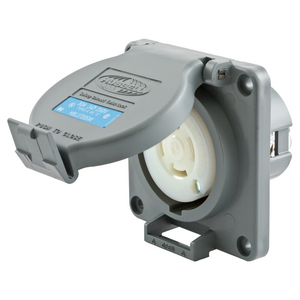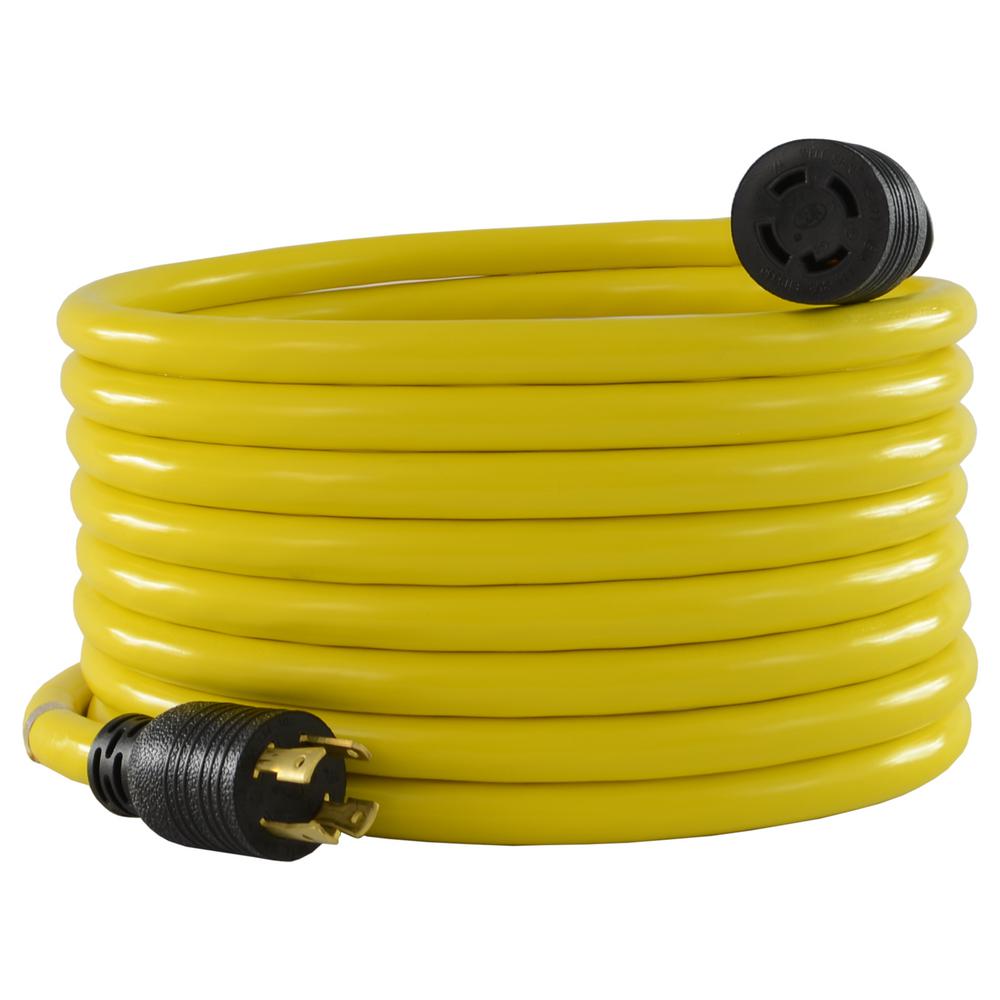I agree with Mike, you are not going to have 'Whole House' generator backup off the RV.
However... if you are looking to run only the systems you named first-
""run the fridge, freezer, and a floor fan to circulate air from the NG fireplace. ""
You have a possible way to do that, and can do so to code.
Using this 30A generator transfer switch -
https://www.lowes.com/pd/Reliance-306LRK-6-Circuit-Transfer-Switch-Kit-P2/50436688 
You can safely supply up to (6) 110V circuits in your house. (The picture shows it configured for 1 220V and 4 110V, but it can be configured 110V only)
-Compatible with most generators that have a 20-amp or 30-amp 120/240 volt 4-wire receptacle
-Can be connected to 1-pole or 2-pole household circuits, up to 30 amps
The breaker panel would be wired into your house panel.
The 'supply receptacle' would mount outside, and be the connection point for your RV.
*******************************************************************************************
On the RV itself, as Mike said, you would need a 30A supply outlet. On my 2350, the transfer switch is located in the drivers B pillar, behind the seat. I would go into that junction box, and directly wire the RV outlet to the transfer switch input. (The generator breakers will be the safety) With a short connecting run to something like this:
https://www.hubbell.com/wiringdevice-kellems/en/Products/Electrical-Electronic/Wiring-Devices/Watertight-Devices/Watertight-Safety-Shroud-Twist-Lock/HBL2720SW/p/1638242
The location of the transfer switch in your rig will determine the outlet location and wiring needs. When using the 'house powering outlet' I would turn off breakers in the coach as to eliminate any draw in there.
********************************************************************************
Now We have a safe 30A connection to the RV generator. We have a proper generator transfer panel inside the house. Just have to link them.
https://www.homedepot.com/p/Conntek-50-ft-10-4-STW-30-Amp-125-Volt-250-Volt-4-Prong-L14-30-Transfer-Switch-Cord-Generator-Extension-Cord-20602/309291375
And now you have a 30A backup power circuit in your house that works off your RV.

Cost will depend on your abilities and other parameters the existing building and RV wiring may present.
*****************************************
And for the house heating system... ""I'd like to be able to supply power to the house thermostats and circulator pumps for the NG baseboard heat.""
It looks like you and Mike both have natural gas heat, I am guessing Mike has a forced air and you have a baseboard water system.

Mike's I am guessing is 220V guaranteed. You need to do some research... check the circulator pumps and see if they are 220V or 110V. You didnt mention the boiler, where the NG is burned to heat the water. That usually supplies the power to the thermostats also. IF it is 110V, you are still in luck.
If the pumps and boiler both together pull less than 30A, you can wire them in with the transfer panel above and you are up and running! There are meters on the transfer panel that will help you monitor your power usage. If the boiler and pumps are 220V, or require more than 30A 110V to run, another generator will be required for house heat.
I
WAS a registered chimney sweep and heating specialist, but 20 years ago in Vermont. Things may have changed in that world that I am unaware of. In Florida since 1994, so very little time spent ADDING heat to a house.

Excuse any ignorance I may show there.
So it is possible to use the RV safely as a backup generator, cost is up to you and your abilities.

